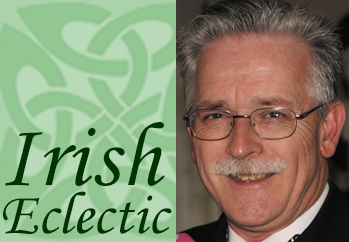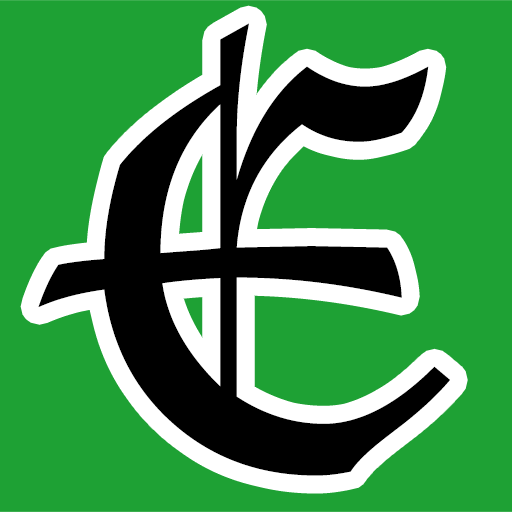An Unexpected Resting Place, Some Say, for the Saint Who Inspired Santa
Opinion Advocates for ideas and draws conclusions based on the author/producer’s interpretation of facts and data.
 By Brian McGowan
By Brian McGowan
And you thought you knew all about Santa Claus, being familiar with New York City native Clement Clarke Moore’s memorable “A Visit from St. Nicholas,” a contribution solidly in the top five list of Christmas must-haves.
You may even have an inkling of who the “jolly old elf” is based on; St. Nicholas, Bishop of Myra, in what is now Turkey.
But do you know where the good bishop’s bones lie? The correct answer is several places, including Bari, in Italy’s province of Puglia; Venice, queen city of the Adriatic; and an abandoned medieval town some 20 miles south of Kilkenny, Ireland. How in the Almighty’s name did a Turkish saint come to rest in Ireland? Read on!
Nicholas was born about A.D. 260 to a noble Roman family in the town of Patara, then part of the empire. Orphaned at an early age, he was raised by an uncle and groomed to become a priest. He rose quickly within the early Christian church, which sprung out of the shadows when Emperor Constantine proclaimed it the official religion of the Roman Empire in A.D. 313.
Nicholas was well-known for his generosity, and over time he gave all his inherited wealth to the poor, the sick and the children under his care as Bishop of Myra. He died in A.D. 343 in his 80s, and was solemnly entombed in a church bearing his name in Antalya, Turkey. And there he lay in peaceful repose for some 800 years, until events of the day dictated a change in locale for his mortal remains.
Enter the Crusades! Well-intentioned, but often mismanaged and outright barbaric, the Crusades were a multi-century attempt to reclaim the Holy Land from its non-Christian rulers, the Muslims. Knights from all over Europe, including Ireland, willingly left their castles and manors behind to join the fray.
After several hundred years of warfare, the tide began turning in favor of the Muslims. In the retreat to Europe, two Knights from Jerpont, in Kilkenny, who remain to this day nameless, are said to have removed St. Nicholas’s bones from Antalya, to save them from desecration by the advancing Saracen armies. They took them first to Bari, in Italy, where some pieces were interred in the Basilica di San Nicoló. Others were sent north to Venice, resting in the Chiesa di San Nicoló. What was left remained in the two knights’ possession as they made their way back home to Ireland.
Jerpont, on the River Nore, which we crossed on our 2022 trip to Ireland, is named after a neighboring Cistercian abbey, and was a favored launching point for Irish-Norman knights looking to claim fame and fortune in the Holy Land. And if you cannot come home victorious, then bearing some relics of a saint is certainly no small accomplishment.
Those relics quickly found a home in this bustling medieval village, secured within the walls of a church known from then on as the Church of St. Nicholas. The town was booming well into the 15th century, having one of the few bridges spanning the Nore, with tolls to swell the village coffers. But battles and plagues of 17th century Ireland – and a competing bridge or two – left the place abandoned by the 1700s. It is considered one of the best surviving examples of medieval village life in all the British Isles.
Where, exactly, the saint’s remains lie within the bounds of the church and surrounding graveyard is not definitively known. A stone slab effigy, much damaged and cracked, is purported to have once covered his final resting place. However, it was moved in 1839, and no attempt was made to excavate the original gravesite.
A clue to the two knights’ stares from this stone, flanking the head of St. Nicholas and guarding forever the final resting place of at least some of the bones of the man who would inspire throughout the Western world the legend of Santa Claus. In addition to his more familiar role as Santa Claus, St. Nicholas is the patron saint of merchants, sailors, prisoners, and – of course – children. He died on Dec. 6, 343, which is celebrated as his feast day.
Hearing a bell? Good! Merry Christmas, happy holidays and a happy new year!
Longtime Pleasantville resident Brian McGowan was born and raised in the Bronx, and is a second-, third- and fifth-generation Irish-American/Canadian, as his immigrant ancestors followed several paths to the New World. Reach him at brian.m.mcgowan1952@gmail.com. He is the author of three books: “Thunder at Noon,” about the Battle of Waterloo; “Love, Son John,” about World War II; and “Island Prize,” about the Revolutionary War in 1776 New York. All are available at Amazon.com.

Examiner Media – Keeping you informed with professionally-reported local news, features, and sports coverage.
